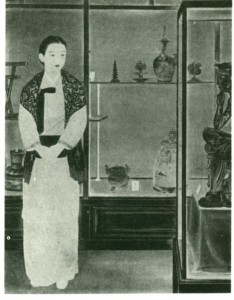Friday, October 21, 3-5 p.m. in CEAS 319 (1155 E 60th St)
Mi-Ryong Shim, “Aesthetics of New Regionalism and Korean Local Color in the Wartime Japanese Empire”
Discussant: Hyun Hee Park (EALC)
Please join us this Friday to welcome Mi-Ryong Shim, Assistant Professor of Korean Literature and Culture in the Department of Asian Languages and Cultures at Northwestern University. Professor Shim will present a chapter-in-progress from her current manuscript project. She summarizes the chapter as follows:
The years that followed the outbreak of the Second Sino-Japanese War have long been remembered in Korean national history as the period of imperialization (Korean: hwangminhwa, Japanese: kōminka), a wartime campaign that targeted the transformation of the colonized population into loyal subjects of the Japanese empire. It included infamous policies, such as the push for “Japanization” of Korean names and the promotion of Japanese language as the “national language” for Koreans. These measures have long been remembered as the colonial authorities’ attempts to fundamentally eliminate Korean cultural identity. However, when looking at the journals and newspapers published in colonial Korea in the 1940s, one finds that the topic of “Korean literature” (J: Chōsen bungaku) and “Korean culture” (J: Chōsen bunka) continued to be hotly debated well into the wartime years, even as venues for Korean language publication and instruction were being systematically shut down at this time.
In this paper, I examine the debates about Korean cultural identity from the late colonial period to argue for an understanding of “Koreanness” as a contested site where contradictory frameworks within the wartime Japanese imperial discourse – namely assimilationism and Pan-Asian regionalism – competed and intersected. In relation to this broader context, I analyze two of the Japanese-language local color fiction written in the early 1940s by Yi Hyo-sŏk, one of the most celebrated writers of nativist aesthetics in the Korean literary canon. Through close reading, I shed light on how the aesthetics of regionalism and local color constructed the imperial subject by continually redrawing the boundary between the foreign and the native. I also demonstrate how these texts, even as they were part of the wartime imperial discourse, articulated moments of disruption and rupture by pointing to spaces of irony and ambivalence from within.
A draft of Professor Shim’s chapter is available at this link. If you have not received the password for the post, or if you have concerns about accessibility, please feel free to contact Alex Murphy at murphya1@uchicago.edu.
